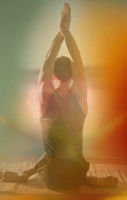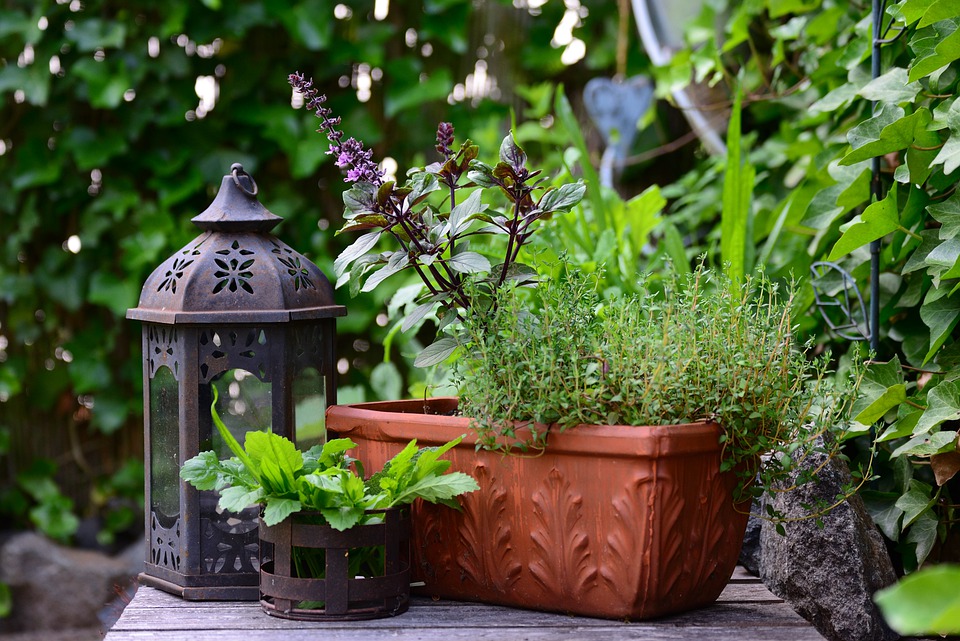Yoga and Emotions
by Lori Batcheller, MA, MPT, for Kripalu Center for Yoga & Health Life inevitably presents us with a wide array of emotions, both positive and negative. While most of us embrace feeling happy, in love, or peaceful, we often resist what we label negative emotions, such as fear, anxiety, and grief. Although in the West we often turn to psychotherapy, medication, or even addictive behaviors to help overcome or cope with negative emotions, yoga offers us both a philosophy and a set of practical tools to ease the innate challenges of being human.
Life inevitably presents us with a wide array of emotions, both positive and negative. While most of us embrace feeling happy, in love, or peaceful, we often resist what we label negative emotions, such as fear, anxiety, and grief. Although in the West we often turn to psychotherapy, medication, or even addictive behaviors to help overcome or cope with negative emotions, yoga offers us both a philosophy and a set of practical tools to ease the innate challenges of being human.
The Root of Depression and Anxiety
Yogis believe that we are born whole, but due to various life experiences, we forget this state of wholeness, or who we really are. We start thinking of ourselves as alone and alienated. Likewise, Buddhists believe that we are essentially good. Like a gold coin buried in a pile of dust, our sense of our innate goodness and completeness gets lost beneath our physical and emotional reactions to life. Both schools of thought advocate clearing the emotions and becoming aware of our thought patterns so that we can reconnect to our pure essence and essential goodness.
The separation from our completeness occurs differently for each person. According to Amy Weintraub, a Kripalu Yoga teacher and author of Yoga for Depression: A Compassionate Guide to Relieve Suffering Through Yoga, some people disconnect early in life in response to inappropriate care from parents or caregivers. These people tend to carry their underlying grief in the tissues of the body and develop lifelong symptoms of depression. Others, faced with some sort of trauma or loss—whether relatively small or something major like a natural disaster, terrorist incident, or violent personal assault—develop Post Traumatic Stress Disorder (PTSD). This syndrome can include symptoms of irritability, anxiety, detachment, and feeling emotionally numb or depressed, along with physical tension and difficulty sleeping. Then there are the dozens of difficult emotions we feel every day in response to living in a fast-paced and stressful culture.
Fortunately, regardless of whether a mood is a lifetime issue or a response to a current situation, yoga, including asanas (poses), pranayama (breathing), and meditation, can help us regain our sense of connectedness to Self.
How Yoga Works
Anyone who has practiced yoga can attest to the fact that asanas combined with deep breathing make us feel better. Recently, scientists have been uncovering the biological reactions responsible for this enhanced mood.
In Western terms, our bodies react to stress and trauma by activating the sympathetic nervous system, also known as the “fight or flight” response. Blood rushes to our extremities, and our heart rate, blood pressure, and respiratory rates increase. Concurrently, the blood flow to our digestive tract slows down. Under normal circumstances, once the danger has passed, our bodies return to a state of balance. But faced with chronic stress, our bodies get stuck in the fight or flight mode, gradually wearing down our system, which can lead to chronic anxiety, depression, and even physical illness.
Studies have shown that doing yoga activates the parasympathetic nervous system, lowering the heart rate, respiratory rate, and blood pressure. Cortisol levels drop (the hormone secreted by the adrenal glands in response to stress) and the pituitary gland secretes oxytocin and prolactin—the “cuddle” hormones responsible for feelings of love. And, according to Amy, certain yogic breathing practices also likely stimulate the vagus nerve, which is a known treatment for depression.
In the yogic model, two reasons exist for remaining stuck in negative emotions. The first is samskaras, or karmic knots, that develop in response to each trauma or loss. Performing asanas while focusing on the breath helps release the karmic knots, freeing our emotions and the related tension in our body.
The second is a lack of prana, or vital life force, in the system. When our prana is low due to stress, overwork, or simply living in a crowded area, we tend to feel sluggish. Doing yoga with attention to the breath expands the lungs, bringing in more prana, creating a state of mental alertness, and calming the body. Studies have also shown that doing yoga regularly results in an intrinsic spiritual experience, which has been associated with better mental health.
Meditation practices, found in both Buddhism and yoga, also calm the mind and cultivate a safe witness. This ability to witness our thought patterns and emotions allows us to gradually develop different reactions to life events and realize that, while negative emotions may not be pleasant, ultimately they are not who we are. Studies show that meditation techniques actually activate a specific part of the brain, the left prefrontal cortex, known as the “happy side of the brain.”
Another important aspect to yoga practice is that everything is done bilaterally, thus balancing the right and left hemispheres of the brain. Nadi shodhana, or alternate nostril breathing, is especially balancing, since breathing through the left nostril has a calming effect and right nostril breathing tends to be stimulating.
The Importance of Daily Practice
While the positive effects of doing yoga can be felt after a single session, to reap the full mood-enhancing benefits, a daily practice is essential. Amy likens yoga to a prescription antidepressant or anti-anxiety medication—a daily dose is required. While particular poses are sometimes recommended for specific conditions, because anxiety exists alongside depression 80 percent of the time, a balanced practice, including forward bends, back bends, side bends, inversions, twists, and pranayama, is recommended for bringing satva, or balance to the nervous system and promoting feelings of well-being. And while physical postures alone are effective in balancing mood, studies show that combining asana with pranayama has a more notable effect.
The key is to meet your mood and individual constitution with your practice. Check in each time you get on your mat, noting your mood and energy level, then adjust your practice accordingly, rather than repeating the same series every day. If you’re feeling anxious, begin with more active poses. If you’re feeling lethargic and depressed, begin slowly and gently, and work up to more movement. Keep in mind also that many poses can be done either restoratively or vigorously.
Finally, Amy points out, any yoga practice used as a form of treatment for mood disorders is empowering to the practitioner because they’re doing it for themselves, rather than having someone do something for them or to them.
Kripalu Center for Yoga & Health is the nation’s most established center for yoga and holistic health. For 30 years, we have been providing people with tools for optimal living through workshops, trainings, and retreats. Visit us online and view program offerings, request a catalog, read our monthly newsletter, and more. For more information, go to www.kripalu.org.
Lori Batcheller, MA, MPT, is a former Kripalu Center long-term volunteer, a certified Kripalu Yoga teacher, and a certified journal instructor. As a freelance writer and editor, she writes for Kripalu publications, national magazines, and trade journals about yoga, holistic health, personal growth, and disabilities.
Herb's Tips and More
-
 Did you know that you can make soap, candles and lotion with your herbs?
Did you know that you can make soap, candles and lotion with your herbs? -
 Never take any herb identity for granted. The best way to be sure that you are using the right kind of herb is by buying it.
Never take any herb identity for granted. The best way to be sure that you are using the right kind of herb is by buying it. -
 Excellent health articles whether you are looking for information or inspiration regarding preventive health or are dealing with a medical
challenge.
Excellent health articles whether you are looking for information or inspiration regarding preventive health or are dealing with a medical
challenge.









